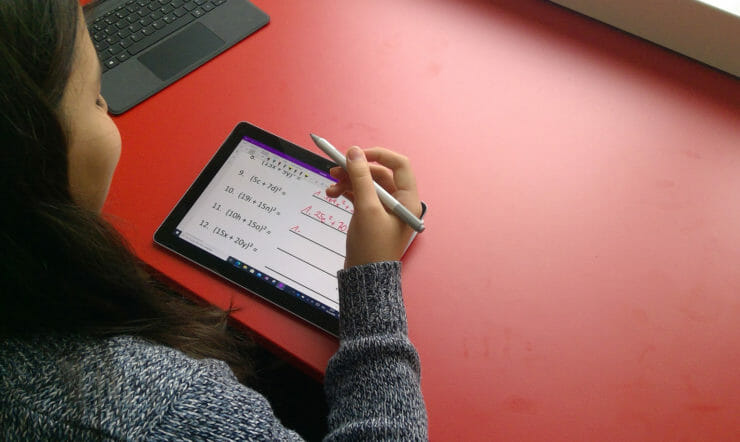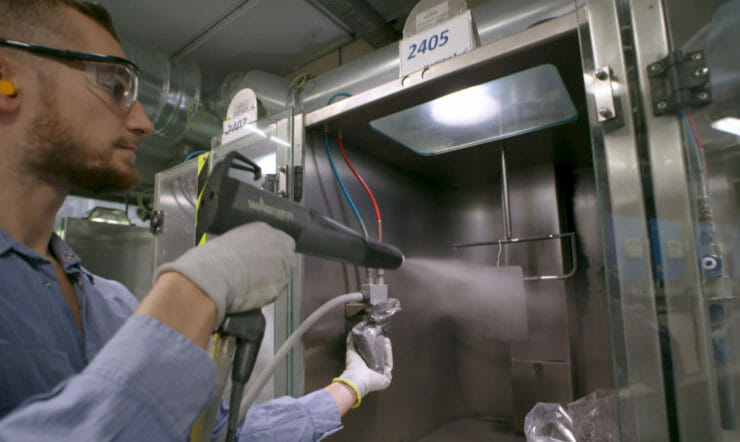Healthcare institutions all over the world experience a huge transformation. In this blog we will address big trends that drive this transformation, like the COVID-19 pandemic, enhanced collaboration between medical specialists and the rise of cyberattacks. In addition, we will also explain how organizations can respond to these developments with the joint solutions from Microsoft and Citrix.
Healthcare providers face amplified infrastructure issues due to COVID-19
The COVID-19 pandemic has had a profound impact on many industries, but especially healthcare providers were directly impacted by the consequences of the virus. Hospitals and Intensive Care units were overloaded, resulting in overworked staff and deferred treatments for non-acute care. To limit the contamination rate, patients could not visit the hospitals and appointments with doctors were canceled. Although technology provides an opportunity for remote healthcare, not all hospitals are equipped with the right technology, like telemedicine and telehealth.
Enhanced collaboration for medical specialists
Because of the COVID-19 pandemic, collaboration between medical specialist is more important than ever. To find the best cure for patients, specialist from different disciplines need to work together. They need to look at patient data or get insights into specific patient cohorts and develop a personalized care path for a group of patients. Because of social distancing however, they need to find ways to work together from a distance. Information Technology plays a key role in enabling healthcare professionals with the right tools to collaborate digitally. Because of the rising costs for saving COVID-patients, budgets are cut. IT departments need to find affordable solutions to enable this digital collaboration.
Rising number of cyberattacks during the COVID-19 crisis
Since the start of the pandemic the number of cyberattacks on hospitals have risen. On the one hand we have seen an increase in ransomware attacks to disrupt hospital infrastructure by locking the most important systems and files. On the other hand, hackers try to steel valuable patient data.
Microsoft and Citrix reimagine the future of work in healthcare
To help healthcare institutions respond to these trends, Microsoft and Citrix have joined forces. Satya Nadella, CEO of Microsoft says the following about this collaboration: “As organizations everywhere adapt to new ways of work, they need to reimagine how work gets done. Together with Citrix, we will apply the power of Azure to this challenge, helping our customers seamlessly and securely connect their employees to their applications, so they can be more agile and productive wherever they are.”
In this blog we will show you how the four pillars of the collaboration between Citrix and Microsoft provide the best solutions to respond to the many challenges the healthcare sector faces. But before we dive in, let’s quickly introduce the protagonists: Windows Virtual Desktop and Citrix Cloud.
Windows Virtual Desktop
Windows Virtual Desktop (also known as WVD) is a virtual machine that hosts a desktop and app virtualization service that runs on the Azure cloud. The platform can bring together Microsoft 365 and Azure to provide users with a multi-session Windows 10 experience. This gives organizations great advantages like reducing IT costs and faster innovation. Starting with the costs, whenever you run an instance of Windows on a virtual machine that runs on-premises, you need a certain number of base resources, like memory, CPU, and storage per VM. So that is a cost per user. When running Windows 10 multi-session you use these same resources, but for multiple users.
Furthermore on-premises virtual desktops are built for 3 to 5 years, and then after that period organizations decide what to do next. If they want to continue with an on-prem virtual desktop, they have to upgrade to a latest version of Windows, a latest version of Office and other software and they need to purchase new hardware. Windows Virtual Desktop is continuously updated so you can break through the 5-year cycle and start with continuous improvement of your virtual desktop infrastructure.
Citrix Cloud
Citrix Cloud is a platform that hosts and administers Citrix services. It connects to your resources through connectors on any cloud or infrastructure you choose (on-premises, public cloud, private cloud, or hybrid cloud). It allows you to create, manage, and deploy workspaces with apps and data to your end-users from a single console.
Now that we introduced WVD and Citrix Cloud, let’s look at the advantages of their combined usage.
- Any device, any application, any connection in healthcare
In the ‘work anywhere, anytime’ era, medical specialists and patients demand extreme flexibility from the IT departments of hospitals. Luckily, flexibility is in the DNA of both Microsoft and Citrix. We provide users with the possibility to work on any device. That way they can use their trusted smartphones, tablets, and laptops (no matter what operating system they use) for their work or to communicate with patients. But how about accessing their specialist medical applications? No problem! Through a user-friendly interface, they can directly access any of their favorite apps like Microsoft Teams, their calendars and even apps that run on-premises. And finally, they can work on any connection. This is especially useful in times where the whole household works from home and bandwidth is limited.
- User centric security for caregivers
As described in the introduction, security should be a top priority for healthcare institutions. Many security solutions however lack user friendliness. Both staff and patients need to log in with separate credentials on different devices and applications. The result: users try to find (insecure) shortcuts. That is why Citrix and Microsoft provide a secure environment out of the box, without compromising the user experience. This solution gives doctors and nurses the ability to do what they are supposed to do at the hospital: cure and care. They don’t need to worry about security.
- Personalized hybrid cloud journey for healthcare institutions
To fulfill users’ wishes for flexibility, an increasing number of healthcare institutions is moving its workloads to the cloud. But since different organizations are at various locations in their cloud journeys, it’s our combined vision that hospitals should go at their own pace. Instead of large all-or-nothing migration projects that take months and are very costly, you can start with the quick wins. If you have workloads which you want to run on a Virtual Desktop as part of a new project, it only takes you five clicks in the Citrix Cloud Management layer to deploy a new Windows Virtual Desktop.
- Proven joint track record
With our joint customer base of more than 400.000 organizations that have relied on our joint solutions for more than 30 years, we have a lot of experience in complimenting each other.
Are you interested in the possibilities Microsoft and Citrix can provide to your healthcare institution? Click here to learn more about our joint solutions.



























